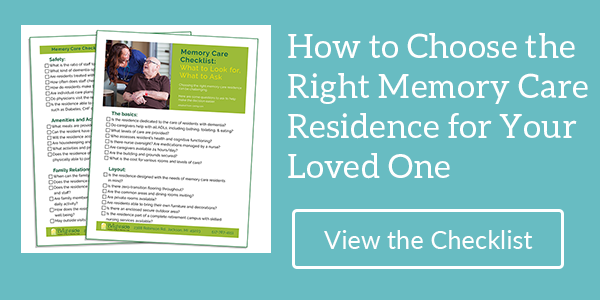
As dementia progresses, behavioral changes will become more noticeable and frustrating. Although everyone is different there are some common behavioral changes that caregivers and people with dementia can prepare for. By understanding the behaviors and the best practices for managing them, it is possible to ease the progression of dementia for everyone involved.
Common Behaviors
One of the most obvious changes is the inability to express oneself. Even the most articulate and cultured people can lose the ability to say what they mean, which can be annoying to caregivers, but devastating to the person. It is important to realize they are not doing it on purpose, nor is it possible to “teach” them to speak better. Caregivers should maintain a patient and understanding demeanor that shows they understand and are there to help.
Memory loss is another very common symptom of dementia. When someone is unable to remember it can be not only bothersome, but potentially dangerous. For example, being unable to remember where they left the car keys is one thing, being unable to remember how to drive home from the grocery store is another. While this is just one facet of the repercussions of memory loss, caregivers should be prepared to hide or remove car keys when the time comes and take other measures to prevent the person with dementia from driving.
Aggression is another behavior change that many people with dementia experience. This can occur in people who have no history of aggression and can be very surprising and confusing for caregivers who may react by arguing with the person. When aggression occurs, the best action is to step away from the person and allow them space to relax and calm down. When they have, they can be approached again, calmly and gently.
Best Practices
One way to help someone with dementia feel more in control of their lives is to initiate strict routines to follow. These help the person and the caregiver create a new normal and give structure to life. The person will become used to the routine and will be more comfortable because they will know what’s next on their daily agenda. Creating routines can be at the micro level, like the process for brushing their teeth, or the macro level, such as the daily routine of eating breakfast, dressing, personal hygiene practices and so on. It can also go up to the weekly scale with Mondays are grocery shopping day, Tuesdays are walk-to-the-park day, Wednesdays are go for a drive day, etc.
Another good rule of thumb is to incorporate things the person has always done into the routine. Maybe the person always walked the dog before breakfast. The caregiver can accompany the person on the walk and keep the routine intact, which is comforting to people with dementia.
Caregivers should be mindful that as dementia progresses, routines from the past may have to be modified. Things that used to be fun like family reunions and other large group events may become confusing and difficult for the person. It may also become necessary to begin scaling down things that require decision making so that the person has one or two choices rather than six or eight, such as when choosing clothes or meals.
As communication skills become more and more affected, caregivers may also become less and less communicative, if only to eliminate some of the frustration. But the best way to ease the impact of diminished communication skills is to simply be patient and make a daily effort to connect with the person. It’s a good idea to fill in blanks when the person cannot complete a thought as it keeps the conversation flowing but resist the urge to correct them. Staying calm, smiling even when it’s hard and offering comfort all go a long way in establishing and maintaining a comfortable, safe and even happy environment.
Another important aspect of dementia that affects more than half of all people diagnosed with symptoms is the tendency to wander. It can happen at any stage of the disease at any hour of the day or night and can result in injury or even death. This tendency may surprise caregivers, especially if it seems out of character for the person with dementia. To better prepare for the potential of wandering, there are several things that seem to precede wandering events:
- The person forgets how to get to well-known destinations outside the home, and inside (like the kitchen or bathroom).
- The person repeatedly says they want to go home, even when they are home.
- The person appears anxious or restless, and/or is pacing or making repetitive movements.
- The person talks about going to work when no longer employed or asks about old friends or family members from the past.
To avoid a wandering event, stick to your routine and be on guard for telltale signs as noted above. If they occur, try distracting the person with conversation, exercise or a chore they can easily accomplish and preferably one that is soothing and familiar. Track the occurrence of the signs so that you can begin to see a pattern or a timeline. Also put in place safeguards to protect the person and make it difficult or impossible for them to leave without help, like locks that are out of their reach, alarms, and possibly a device to track the person’s location.
Our "Memory Loss and Memory Care Guide" can help walk through in more detail the decisions involved with caring for someone with dementia. A great source for more information about dementia and related symptoms and diseases is the Mayo Clinic. If you have questions about short- or long-term care for a loved one with dementia, contact Brightside Assisted Living & Memory Care!

